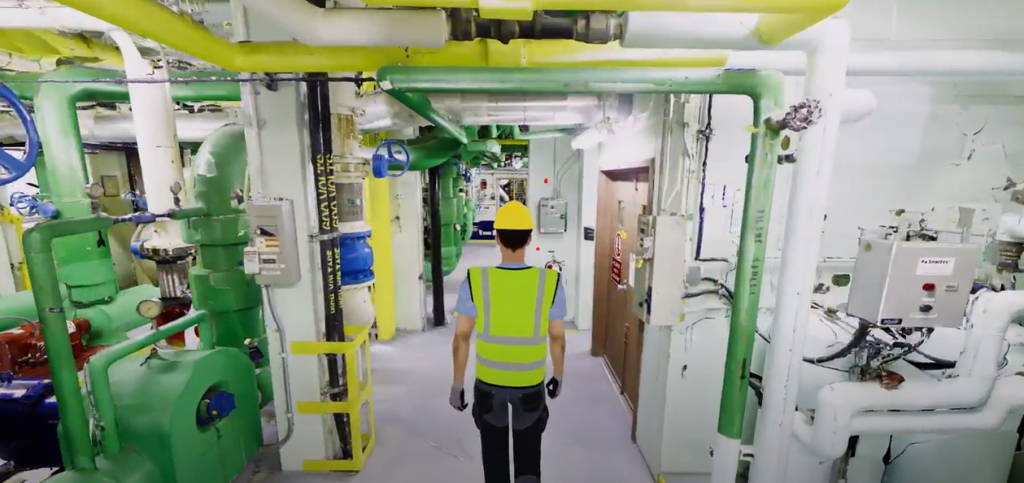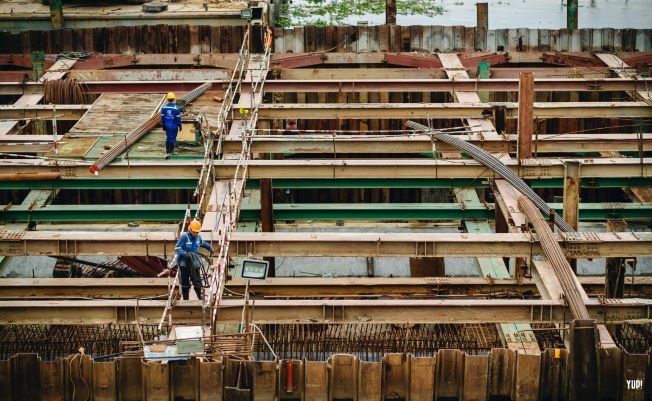“The industry needs to change; here’s how to manage it.” That was the tagline for a 2016 report from McKinsey & Company entitled Imagining construction’s digital future, a write up which served to rock the industry to its core. Chances are you’ll still hear about the findings to this day, as it was a much-needed wake-up call for one of the world’s most robust, but also most locked-in-its-ways, sectors. Right at the top of the report, McKinsey notes that “large projects across asset classes typically take 20 percent longer to finish than scheduled and are up to 80 percent over budget.” Those numbers are untenable in any context, but especially in a time when most industries are getting more efficient with time, largely due to the advent of wider technological adoption.
That idea of adopting technological solutions was the focal point of this report, with the authors hypothesizing that many of the industry’s shortcomings could at least be alleviated with more widespread adoption. When this report was written six years ago, the industry was one of the most resistant to these solutions, but it’s been more than half a decade since then. It’s worth taking stock of where the industry is now in the five major areas highlighted in McKinsey’s original report, and where there is still work to be done.
Higher Definition Surveying and Geolocation
It makes sense to start things off with where construction projects typically start, looking at the initial geological surveys that kick off a project. As the McKinsey report notes, geological “surprises” tend to be a major reason why projects end up being delayed and/or over budget. It’s key to get accurate information about the terrain on which you are going to build, as well as what is happening under that terrain, because any last-minute changes due to inaccurate information is going to be costly.
In the report, they call out things like 3D scanning, high-definition photogrammetry, GIS systems, and UAVs as methods to help avoid these mistakes. This technology was certainly available back in 2016 when it was written, but it has since become much more accessible. Lidar scanners and high-definition cameras for photogrammetry are now much cheaper than they once were, and the accompanying software has only grown in user-friendliness, allowing beginners to more easily jump into the space. Many of these payloads have also seen a reduction in weight without sacrificing accuracy, allowing them to be easily attached to UAVs, and in turn allowing for projects to be completed much more quickly. There is still some intimidation around this technology which serves as a barrier for more widespread adoption, but the accessibility of these tools only continues to improve, and with it the adoption rate grows.

Next Generation 5-D Building Information Modeling
The concept of digital, three-dimensional models for construction projects is far from a new one, with the report noting that major aerospace companies “pioneered” the concept in the 1970s. Having these reference points helped improve productivity in the sector, but things largely stagnated from there. McKinsey calls for more to be done with these models, specifically by moving away from the tendency to utilize “bespoke” software tools and finding more universal tools that can represent the project in five dimensions. In their vision, in addition to the 3D representation in space, these models will also consider a project’s cost and schedule.
This is indeed a trend that has been picking up over recent years and it would be fair to expect that growth to continue at a rapid pace. “Digital twins” is something that has been looked at as a buzzword for a long time now, and there is still disagreement about what the term even means at the most basic level. Most would agree, though, that it’s largely what is being described here. With the digital twin tools available today, all relevant stakeholders can have access to up-to-date information about the project, including the ability to compare as-designed to as-built progress. This allows for more ability to catch possible clashes and mistakes earlier, which in turn saves considerable amounts of money and time, and the accessibility of these tools are only growing, just as was the case with the surveying tools.
As with the more modern surveying techniques, there is considerable adoption of these more advanced modeling tools (however you want to term them), with one estimate indicating the digital twin market was worth $7.48 billion USD in 2021. That doesn’t mean there’s no room for growth, though, with that same estimate projecting a compound annual growth rate (CAGR) of 39 percent from 2022 to 2030.
Digital Collaboration and Mobility
While a lot of the issues around efficiency and productivity in the construction industry can be attributed to more technical issues with high-tech solutions, a significant portion generally comes down to communication and collaboration. For too long, the AEC industry has been siloed, with architects, engineers, and contractors all working separately with sporadic communication if any at all. This lack of communication leads to signals being crossed, and ultimately necessitates costly rework. This should not be happening in today’s age, especially in a world that has made remote collaboration significantly simpler during the pandemic. McKinsey’s report specifically mentions mobile tools to allow easier collaboration with those in the field as well, and all of this is certainly on the market. It’s just a matter of adopting it.
One of the biggest names for BIM software, and AEC technology in general, is Graphisoft, and they certainly put plenty of value on the idea of collaboration. Recently celebrating their 40th anniversary, they talked to Geo Week News about the importance of this communication and what it can mean for projects. Speaking specifically about collaboration with architects and engineers, they compare the concept of collaboration to the fire triangle, with the three key components being people, technology, and processes. Companies that have these pillars in order are sure to be much more streamlined. And when you add in some of the newer remote collaboration tools, those in the field can be added to the mix to ensure everyone is being heard. The tools are here for this portion of the report to be second nature; it’s just a matter of companies being willing to try new things and reap the benefits.

The Internet of Things and Advanced Analytics
While some of the tools discussed in this report and our follow-up, like the collaboration platforms discussed above, are relatively simple, it’s things like Internet of Things (IoT) sensors and advanced analytics that get people to start balking. But while they sound intimidating, they can provide so much extra information, and companies are starting to break down some of the barriers to entry. For Internet of Things sensors, contractors and project leaders can have up-to-the-minute information about everything around the site, including the state of equipment, inventory status, and quality and safety assessments. And while there is certainly a large amount of data coming in from IoT sensors, using advanced analytics and artificial intelligence can take a lot of the data processing legwork away from the user, with the machine taking care of the dirty work to provide key insights needed by the end user.
This is a sector that is still growing in the construction industry, but it’s a space that can be expected to catch on rapidly as time progresses. This whole report is around ways to prevent so many projects from coming in over budget and over time, and putting these sensors around a job site can monitor everything happening on a daily basis, with the analytics programs alerting stakeholders to potential issues earlier than humans generally detect, not to mention the help these tools can provide in meeting sustainability goals that are now part of every project. Education is still needed to get stakeholders on board with what is admittedly an intimidating topic, but those who are buying in are seeing the benefits, many of which extend beyond the construction phase and into the full life cycle of the building.
Future-Proof Design and Construction
Whereas all of the previous sections of this report focused on what can be described as support technology like surveying and modeling tools. But there are also strides being made in the physical construction equipment and building materials that will streamline production as well. Things like 3D printing and modular construction are rapidly becoming more commonplace, and they are speeding up these projects. The 3D printing construction market around the world was at an estimated value of roughly $1.1 million USD in 2021, but that is expected to grow at a whopping 100.7 percent CAGR from 2022 to 2030. Modular construction, meanwhile, is a bit more well-established at this point, with its market size estimated to be $84.4 billion USD in 2020. It is still expected to grow, with a CAGR of 6.4 percent through 2028.
* * *
Generally speaking, the industry has come a long way in just six years, with this report from McKinsey & Company serving as a much-needed wake up call for those in the space to adopt solutions that are readily available to streamline their work and catch up to the rest of the business world in terms of efficiency. There are still strides to be made, but it’s clear that things are heading in the right direction, with the necessary tools becoming increasingly accessible every year.
Want to learn more about the latest in AEC technology? Attend the 2023 edition of Geo Week!
Geo Week features more than 180 solutions providers showcasing the latest technology across the disciplines under the Geo Week umbrella – AEC, 3D technology and geospatial/lidar. A powerful conference program will detail practical applications, best practices, and innovative approaches to complex projects. Thousands of attendees will be onsite to network, explore market-specific challenges, and make headway on the larger issues facing the industry as a whole. Registration is now open - click here to register today.






